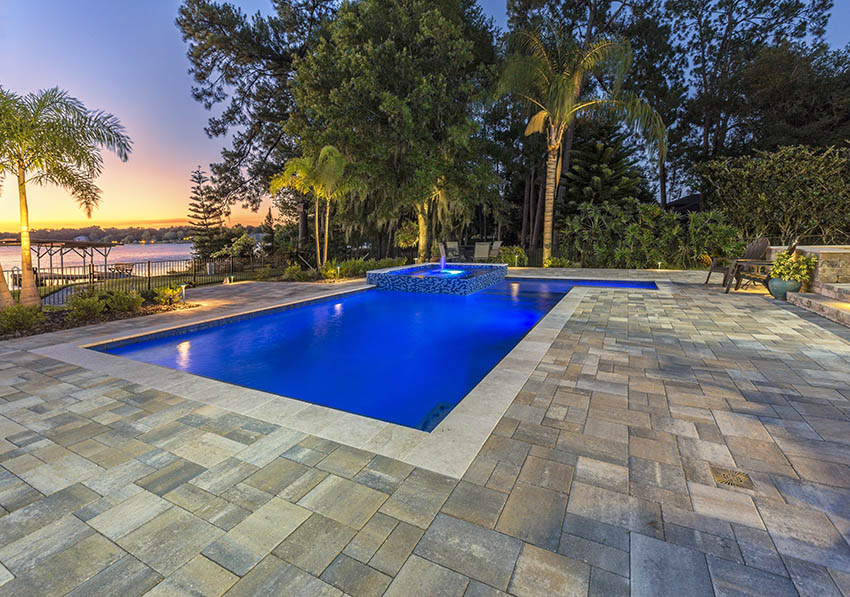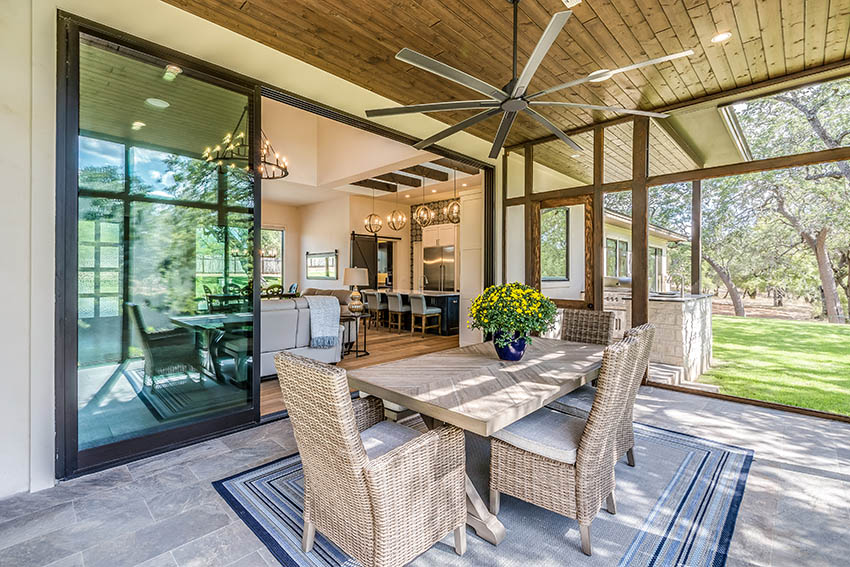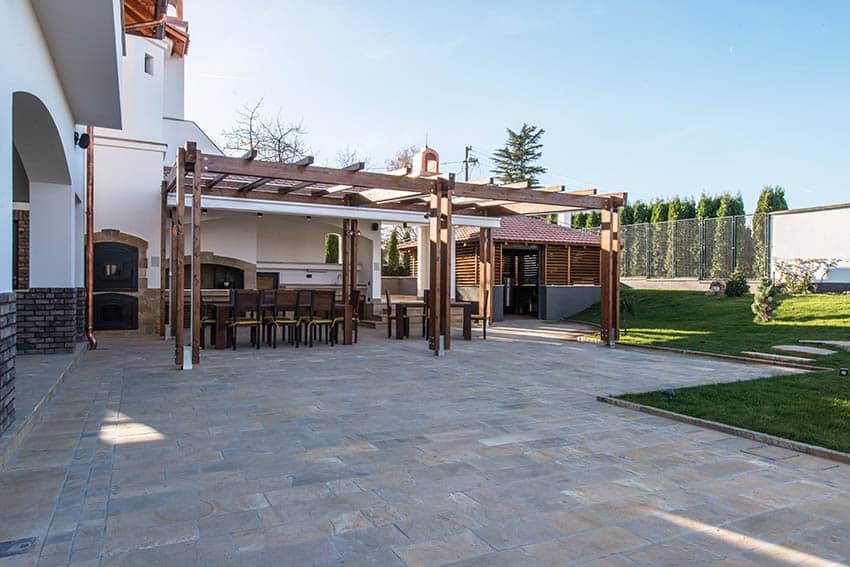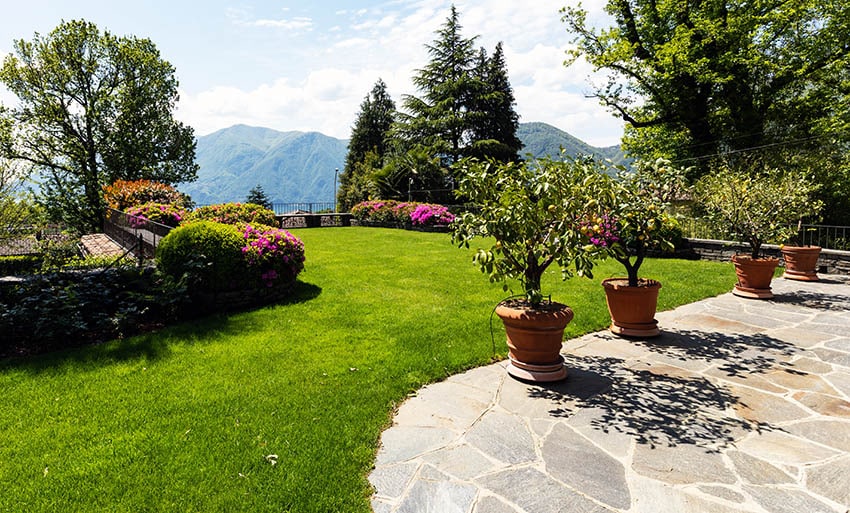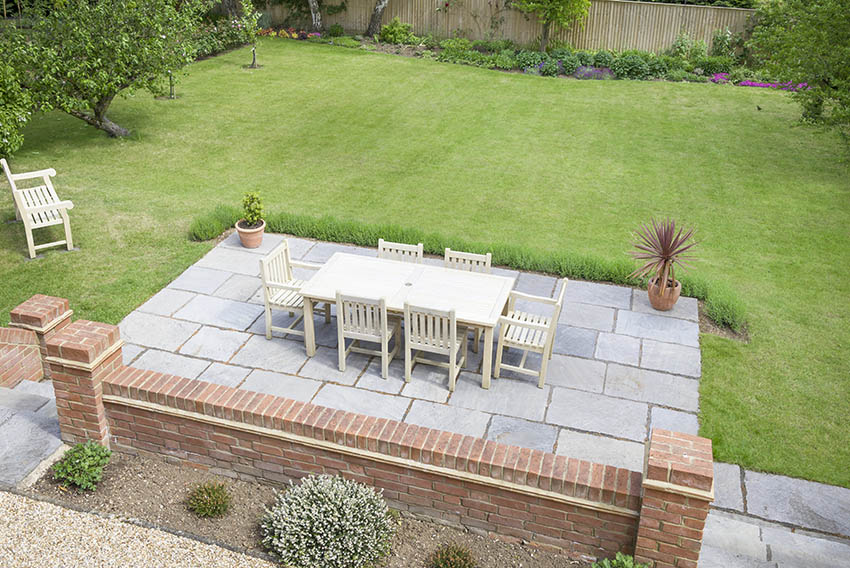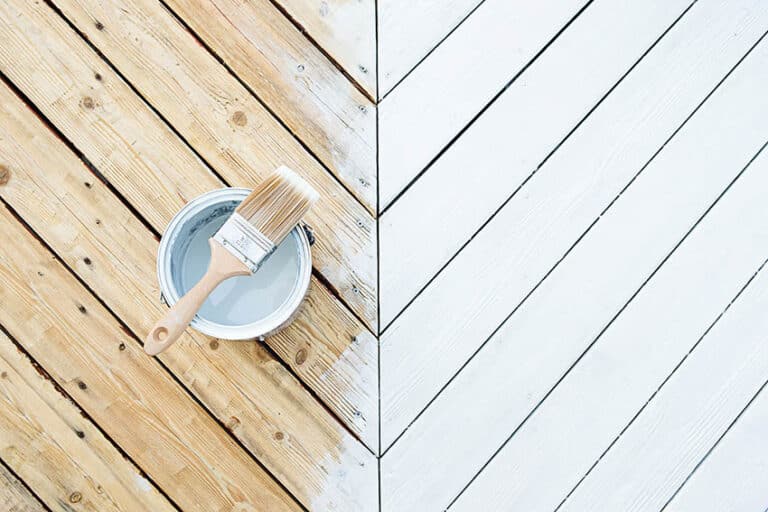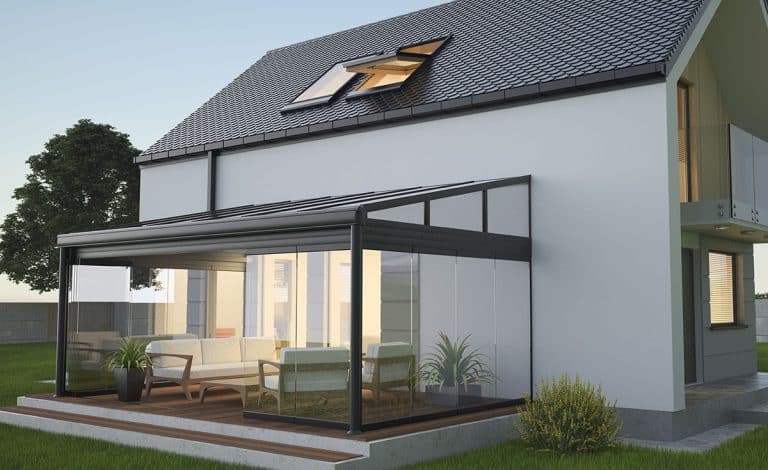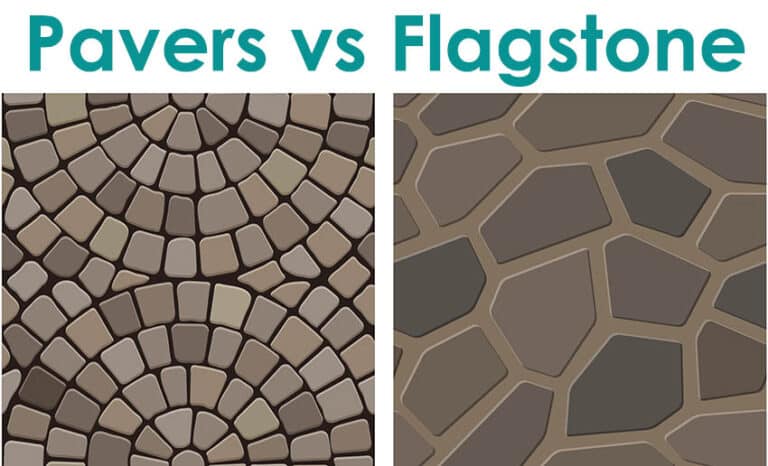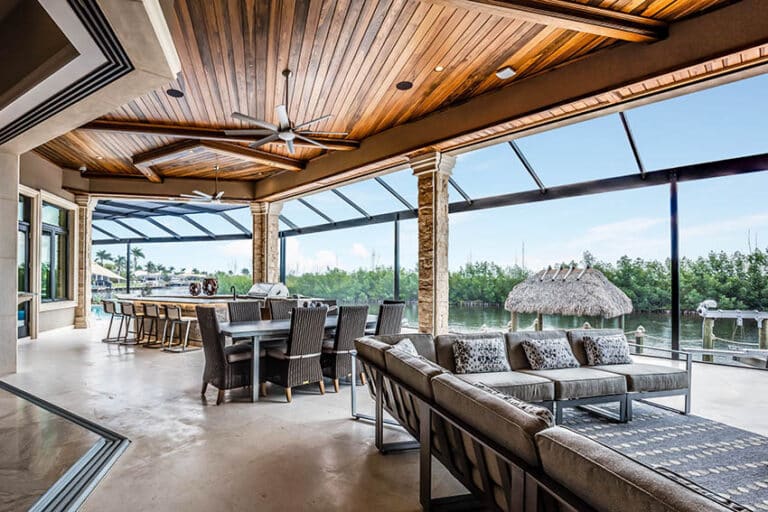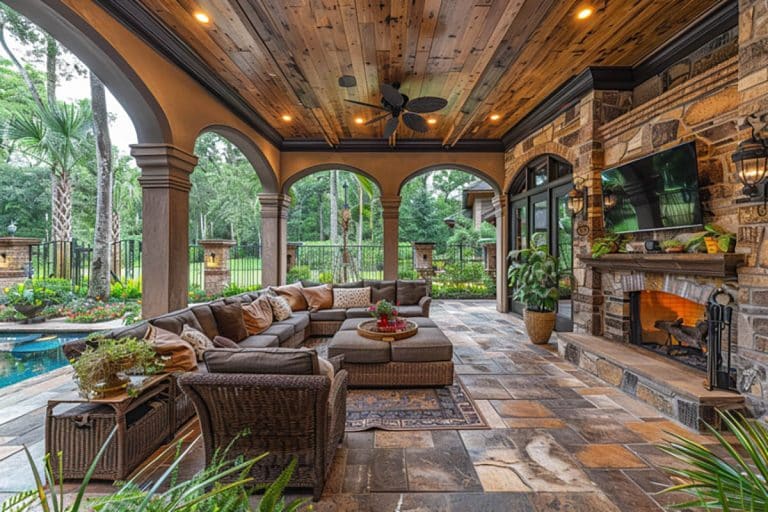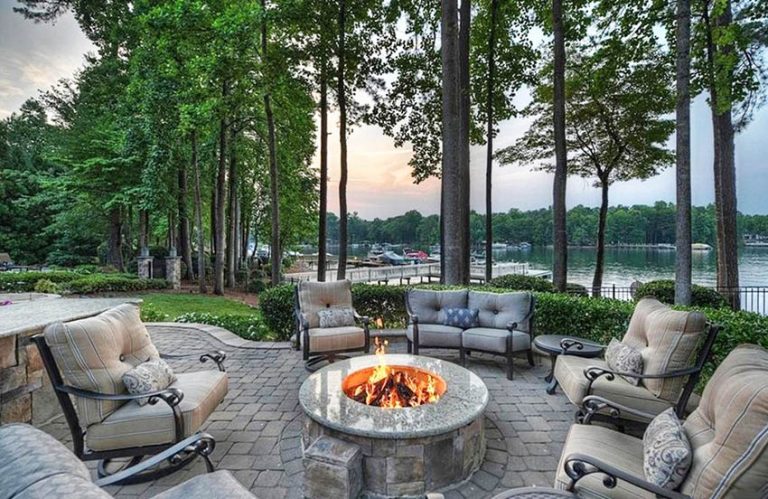Bluestone Patio Design (Types of Pavers & Patterns)
A bluestone patio design is a stunning space that brings your outdoor experience to a whole new level. With its spectacle of gorgeous hues, predominantly from blues to grays with organic tinges such as brown, green, apricot, plum, and beige, you’ll find your patio a delight to behold.

However, more than its striking aesthetics, this design is safe, and comfortable, and presents you with a variant of design choices to fit your lifestyle and taste.
We say this outdoor structure is safe because, unlike most natural stones, you’ll find the organic material as a non-skid surface that fits well with any configuration or use of your patio. This means you can line up your pools with this material and have a cohesive design with your destination patio.
These patios are very popular and you’ll find them in the classic look to the most contemporary patios.
What Is A Bluestone Patio?
Bluestone is a popular type of stone used in construction and is a type of sandstone or limestone made up of both sandstone/limestone and quartz material. It often features a fine grain, with a moderate texture and a blue-gray color.
A bluestone patio is a backyard space typically connected to or near a house that is paved with tiles or pavers made from the said material. Most of these patio designs lean towards a rustic look but clean-cut tiles with the right design can also create a modern-themed patio.
With this outdoor addition, you can add elements to the cool organic backdrop. White pergolas, wrought iron furniture, wicker sofas, potted greens, and flowers, the design possibilities are endless.
Bluestone Pavers
Bluestone pavers have a distinct look thanks to their cool blue and grey tinges. There are also pavers with varying colors with hints of rust, silver, green, and plum.
These pavers are typically 1 inch to 1.5 inches thick and come in various sizes, but the most commonly used are 6” x 6” to 24” x 48”.
This material is a type of flagstone. Flagstone is a flat sedimentary stone that is usually cut in rectangular or square shapes popular as pavement materials and other various applications.
The main distinction of this paver material from a flagstone is its color and ability to withstand weather conditions.
Bluestone, as it is termed, comes in varying blue colors, while flagstone comes in a true gray color with black undertones. Overall, it is much robust and dense making it sturdier compared to the generic flagstone.
If you’re wondering why this material seems to come in varying shades, it depends on the location where the natural stone is formed. This makes every quarried stone layer unique; thus, no two pavers are the same.
These natural stone pavers have various applications and can be used in interior and exterior construction.
Aside from flooring, you’ll see stunning pavers on walls or cladding applications. You can use them as your main material for your fire pit or outdoor fireplace for your patio area.
Varieties of Bluestone for Pavers
In the U.S. there are two main varieties, namely Pennsylvania Bluestone, which is a sandstone, and Shenandoah Bluestone limestone.
Types of Bluestone Paver Cuts
You can cut your bluestone pavers in a range of shapes, from the regular square, rectangle, and triangle to random forms to fit your desired patio design.
The general cuts are the irregular and regular pavers. Irregular pavers, as the term suggests, come without a uniform color or size, while the regular type or also termed thermal bluestone comes with a standard color and size.
• Irregular Pavers – Usually termed as “flagstone shape,” works better with rustic or naturalistic patio themes. As a rule of thumb, free forms of patios use the irregular paver cut since it’s easier to fit along edges and corners. They also look great for circular or round patios.
• Regular Pavers – Also termed as “thermal bluestone,” is suitable with regular shapes such as rectangular or square boundaries because of its uniformity.
Bluestone Patterns
There are two general categories of patterns used: An ashlar pattern that combines squares, rectangles, and color variations, and a fieldstone pattern joins irregular shapes together in a random pattern.
• Ashlar Pattern – It combines squares and rectangles with varying shapes and sizes.
• Fieldstone Pattern – Joins irregular shapes together to create random patterns.
Available Finishes
• Flamed
• Honed
• Sandblasted
Bluestone Cost
Bluestone is much cheaper than limestone, which are other natural stones used in outdoor applications. However, this will still depend on your order’s location, quality, thickness, and quantity.
The cheapest natural variety costs around $5 – $12 per square- foot. For thermal bluestones, you’ll expect to pay a higher price of $16 to $26 per-square-foot which is the most expensive type.
Other than these pavers, you should also consider other materials such as concrete or grout, as well as labor and, once again, your location.
Overall, it’s the complexity of your design that would dictate your construction cost; the more features, the higher the costs.
As a baseline, a 100 square-foot patio area can cost around $650 to $950 for materials and $900 to $1200 for labor. If you’ve got a larger area than 100 square-foot you may need to pay an additional 10 percent for the labor.
Other Factors to Affect Cost:
• Drainage
• Roofing
• Lighting
• Outdoor Fireplace
How to Clean Bluestone Surfaces
Taking care of this material is easy and requires you to clean your paver patio regularly to maintain its pristine look.
Simply use a broom to sweep off the dirt and debris to prevent them from accumulating on your paver surface.
If you haven’t cleaned your pavers for a long time, it’s high time to use a high-pressure water cleaner to remove grime and algae formation. It is advisable to do power washing annually, though frequency will depend on your patio location and use.
It’s important to note to have your patio regularly cleaned as much as possible, especially when your pavers do not receive much sunlight, as mold and mildew can form on the surface. When moss or mold forms on your pavers, it could leave a slippery surface.
How to clean a stain? For water deposits, you can easily scrub them off with soap and water. You can also use a granite cleaner or soft nylon brush.
For more stubborn stains, bleach can be used to clean the surface. If you use vinegar and water mixture, ensure it is stained before scrubbing it on the surface.
Speaking of stained finish, it is recommended that you seal your surface after cleaning to prolong the lifespan of your patio.
What do you think of bluestone patio pavers? Let us know below. For more related information, take a look at our stone patio designs page.

